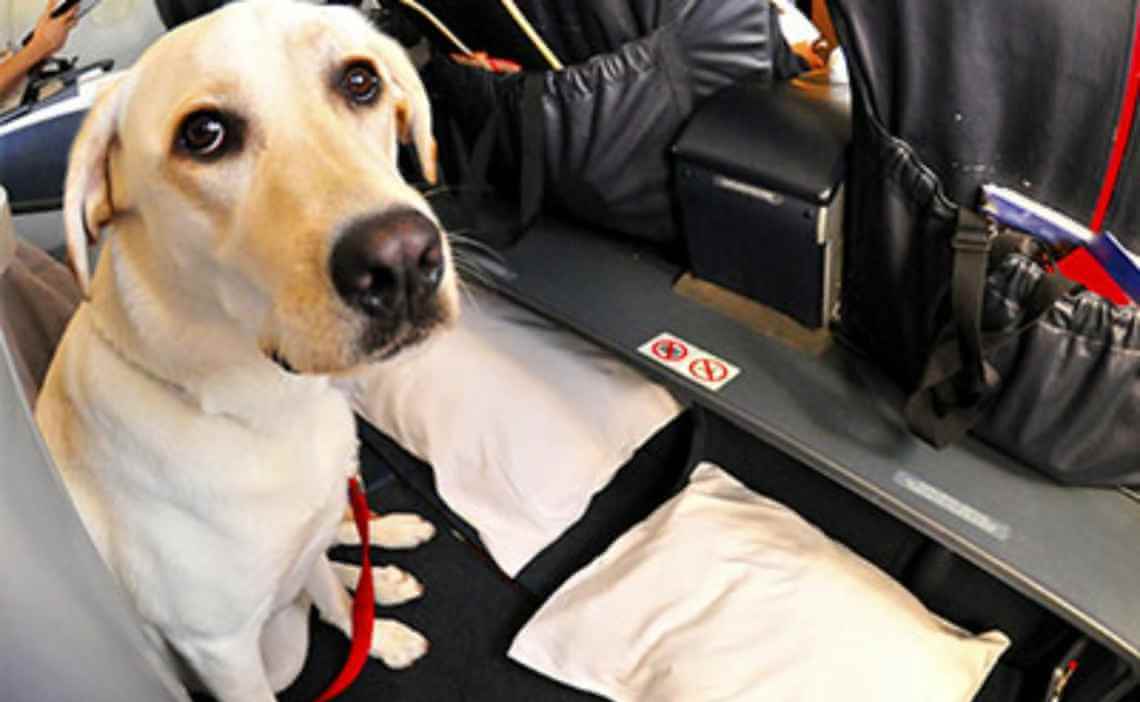
Thinking about hitting the road for weeks or even months—and bringing your furry best friend along? You’re not alone. More and more pet parents are choosing to travel with their dog, whether it’s for remote work, a cross-country move, or a grand adventure in an RV.
While long-term travel with your dog can be rewarding, it does require some thoughtful preparation. After all, your pup depends on you to keep them safe, healthy, and comfortable every step of the way. Here’s everything you need to know before you travel with your dog for an extended time, plus an important alternative to consider if your pup might be better off staying closer to home.
-
Schedule a Pre-Travel Vet Visit
Before you travel with your dog for any length of time, schedule a comprehensive check-up with your veterinarian. This is your chance to make sure your dog is in good health and travel-ready.
During your visit:
- Ensure all vaccinations are current (especially rabies, Bordetella, and distemper)
- Get refills of flea, tick, and heartworm medications
- Request a copy of your dog’s medical records and a health certificate if required by your destination
💡 Pro Tip: If you’re crossing state or international borders, check for specific pet health regulations or documentation requirements ahead of time.

-
Update ID Tags and Microchip Information
One of the most important things you can do before you travel with your dog is to make sure they can be identified if they get lost.
- Update the ID tag on your dog’s collar with your current phone number and email address
- If your dog is microchipped, verify that your contact info is correct in the registry
- Consider investing in a GPS tracking collar for extra peace of mind
When you travel with your dog to new environments, even the best-behaved pups can become disoriented or overwhelmed. A clear, up-to-date ID can mean the difference between a quick reunion and a heartbreaking situation.
-
Pack the Essentials for a Smooth Journey
Your dog’s travel bag is just as important as yours. To travel with your dog for an extended time, you’ll want to pack with comfort and routine in mind. Here’s a list of what to bring:
- Sufficient supply of your dog’s regular food
- Collapsible food and water bowls
- Fresh water (especially for car or RV travel)
- Leash, harness, and collar with ID
- Medications and supplements
- Favorite toys and chews
- Dog bed or travel crate
- Blanket or item that smells like home
- Grooming tools (brush, wipes, shampoo)
- Poop bags and cleaning supplies
Consistency is key when you travel with your dog. Familiar items help reduce anxiety and make transitions smoother.

-
Find Dog-Friendly Accommodations and Stops
Planning where you’ll stay is just as important as planning how you’ll get there. Not every lodging option welcomes pets, so be sure to research in advance.
Look for:
- Dog-friendly hotels, Airbnbs, and campgrounds
- Parks and hiking trails that allow dogs
- Pet-friendly restaurants or cafes
Websites and apps like BringFido, AllTrails, and GoPetFriendly make it easy to find places that will welcome your dog along your route.
If you’re driving, map out rest stops where your dog can safely stretch their legs. When you travel with your dog long-term, little breaks go a long way in keeping everyone happy.
-
Train for Common Travel Scenarios
Your dog doesn’t need to be perfectly trained, but some basic commands and travel practice will make life much easier.
Work on:
- Crate training (if you plan to use one)
- Riding calmly in the car
- Obedience cues like “stay,” “leave it,” and “quiet”
- Being around strangers and unfamiliar settings
If you’re planning to travel with your dog on public transit or planes, research the requirements for carriers or behavior and start training early.
The more confident and prepared your dog feels, the more enjoyable your trip will be for both of you.

-
Create a Dog-Specific First Aid Kit
Accidents happen, and when you travel with your dog long-term, it pays to be ready. A basic first-aid kit should include:
- Gauze, medical tape, antiseptic wipes
- Tweezers (for ticks or splinters)
- Hydrogen peroxide (ask your vet how to use it safely)
- Benadryl (correct dosage varies—check with your vet)
- Copies of medical records and vaccination certificates
- A recent photo of your dog in case they get lost
- Your vet’s phone number and a list of emergency animal clinics near your destinations
This kit doesn’t take up much space and could be a literal lifesaver.
-
Know the Local Rules and Risks
When you travel with your dog to new locations, you may encounter unfamiliar rules or environmental dangers. Be aware of:
- Leash laws and pet restrictions in public spaces
- Breed bans or size restrictions at certain facilities
- Wildlife dangers such as coyotes, snakes, or toxic plants
- Regional diseases (e.g., Lyme disease or heartworm risks)
- Seasonal climate risks like extreme heat or cold
Do your research in advance and always err on the side of caution. Staying informed helps you protect your pup no matter where the road leads.

-
Stay Calm and Flexible
Even the best-planned adventures have hiccups. You might face weather delays, traffic, noisy lodging, or changes in plans. When you travel with your dog, your attitude sets the tone. Dogs pick up on your energy—if you’re calm and flexible, they’re more likely to stay relaxed too.
Make space for your dog’s needs, even if it means slowing down or changing plans. Remember: the goal isn’t to do it all, but to enjoy the experience together.
-
Should You Travel With Your Dog—or Board Instead?
While long-term travel with your dog can be wonderful, it’s not always the best choice for every pup. Consider your dog’s:
- Age and health
- Anxiety level
- Temperament
- Comfort with change
- Tolerance for car rides or crate time
If your dog tends to get overwhelmed in new environments or becomes anxious during transitions, boarding might be the kinder option.
At Canine Campus, we provide a safe, loving, and stimulating environment where your dog can stay while you’re away. Our professional staff ensures your pup receives:
- Daily exercise and enrichment
- Social time (if appropriate) with other dogs
- Consistent routines and compassionate care
- A comfortable space to relax and feel secure
Choosing to board doesn’t mean you’re letting your dog down—it means you’re prioritizing their well-being. If you’re unsure whether to travel with your dog or board them, we’re happy to help you decide what’s best for your furry companion.
Visit our Dog Boarding: Room & Board for Overnight Students

-
Final Thoughts
When you travel with your dog for an extended time, preparation is everything. From vet visits and ID tags to dog-friendly stays and travel training, every detail counts in making your journey successful.
But remember—every dog is different. Some pups will love the adventure, while others may be happier relaxing at Canine Campus while you’re away. The right choice is the one that honors your dog’s needs and temperament.
🐾 Share Your Story!
Have you ever taken your dog on a long-term trip—or chosen to board them instead? Share your experience in the comments below — we’d love to hear how you and your pup made it work!

 110 Dog Friendly Places to Shop in Colorado Springs
110 Dog Friendly Places to Shop in Colorado Springs Unleashing Joy: The Best Dog Toys of 2023
Unleashing Joy: The Best Dog Toys of 2023 Walk Your Dog Week Reminds You to Exercise With Your Dog
Walk Your Dog Week Reminds You to Exercise With Your Dog Best Books for Dog Lovers This Holiday Season
Best Books for Dog Lovers This Holiday Season Tips to Avoid Dog Boredom
Tips to Avoid Dog Boredom






Leave a Reply